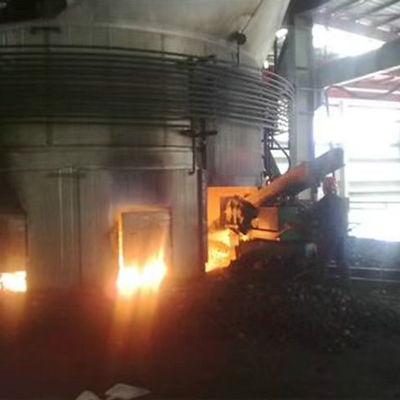In recent years, the global silicon industry has witnessed exponential growth, triggered by the increased demand for silicon-based products in various sectors such as electronics, automotive, and energy production. Amidst this boom, graphite electrodes have emerged as a crucial component in the silicon manufacturing process, delivering enhanced efficiency, improved quality, and cost-effectiveness.
I. Understanding the Silicon Industry:
Silicon, primarily obtained from quartz or silica sand, holds a pivotal place in modern technology due to its unique properties. It serves as the foundation for the production of semiconductors, photovoltaic cells, silicones, and numerous other essential materials. As the demand for silicon-based products surges, manufacturers are constantly seeking innovative ways to augment their production processes.
II. Graphite Electrodes: A Game-Changer in Silicon Manufacturing:
1. The Role and Properties of Graphite Electrodes:
Graphite electrodes are critical components used in electric arc furnaces (EAFs) during the silicon manufacturing process. These electrodes serve as conductive materials, transferring electrical energy to the EAF, which facilitates the melting of raw materials and the production of silicon. Graphite electrodes possess high thermal conductivity, excellent electrical resistance, and remarkable mechanical strength, making them ideal for this demanding task.
2. Enhanced Efficiency and Energy Consumption:
Graphite electrodes offer benefits in terms of efficiency and energy consumption. Their high thermal conductivity allows for quicker heat transfer during the melting process, reducing the time required for silicon production. Moreover, due to the excellent electrical resistance of graphite electrodes, energy losses are minimized, resulting in significant cost savings for manufacturers.
III. Applications of Graphite Electrodes in Silicon Manufacturing:
1. Melting and Refining:
Graphite electrodes are extensively employed in the initial stages of silicon production, where they play a crucial role in the melting and refining of raw materials. The electrodes facilitate the heating and melting of quartz in the electric arc furnace, removing impurities and creating the desired silicon product.
IV. Advantages of Graphite Electrodes in Silicon Production:
1. Increased Product Quality:
Graphite electrodes ensure consistent and controlled melting of raw materials, allowing manufacturers to achieve higher purity and desired chemical compositions in the produced silicon. The precise control over the melting process also minimizes the likelihood of contamination, producing superior-grade silicon products.
2. Extended Electrode Lifespan:
Graphite electrodes exhibit excellent thermal and mechanical properties, enabling them to withstand harsh operating conditions. Their high resistance to wear and tear results in a longer lifespan compared to other alternatives, thus reducing maintenance costs and downtime for manufacturers.
V. Global GE Market Outlook and Future Trends:
The global demand for graphite electrodes in the silicon industry is projected to witness substantial growth in the coming years. The rising adoption of electric vehicles (EVs), renewable energy systems, and emerging technologies like 5G networks are driving factors behind this surge. To meet the escalating requirements, graphite electrode manufacturers are investing in research and development to enhance their quality, durability, and overall cost-effectiveness.
Graphite electrodes have revolutionized the silicon industry, providing efficient, cost-effective, and sustainable solutions to manufacturers globally. As the demand for silicon-based products continues to soar, their role in the melting, refining, alloying, and conductivity processes has become invaluable. With the advantages they bring, such as increased product quality and extended electrode lifespan, graphite electrodes are poised to shape the future of silicon production, meeting the world’s growing technological needs.
Post time: Jun-24-2023







